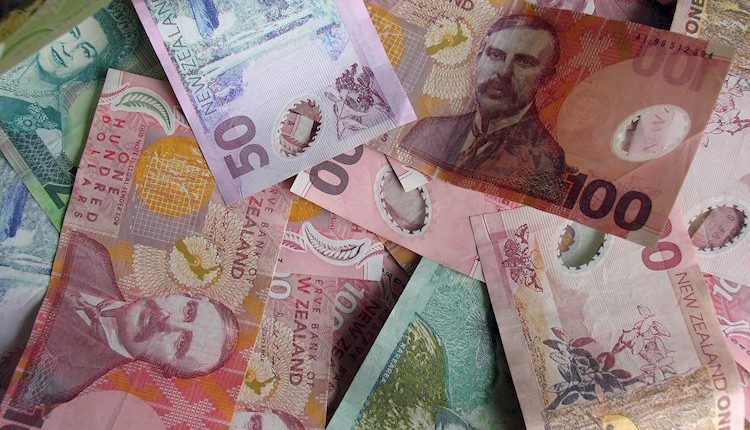- NZD/USD depreciates as traders expect the Fed to adopt a cautious approach regarding a rate cut next month.
- The Fed remains on alert following the latest US inflation data, which highlighted an increase in consumer spending for October.
- The New Zealand Dollar may struggle as the US plans further AI chip sanctions against China.
The NZD/USD pair remains subdued near 0.5890 during early European trading hours. The pair’s weakness can be attributed to the stronger US Dollar (USD), driven by a cautious market sentiment regarding the Federal Reserve’s (Fed) December interest rate decision. Trading volumes may remain light due to the US Thanksgiving holiday.
Wednesday’s latest US inflation data indicated solid growth in consumer spending for October, but it also highlighted a stagnation in progress toward lowering inflation, keeping the Fed on alert. The US Personal Consumption Expenditures (PCE) Price Index rose by 2.3% year-over-year in October, up from 2.1% in September. Meanwhile, the core PCE Price Index, which excludes volatile food and energy prices, increased by 2.8%, slightly higher than the 2.7% recorded the previous month.
According to the CME FedWatch Tool, futures traders are now pricing in a 68.2% chance that the Fed will cut rates by a quarter point in December, up from 59.4%, a day ago. Nonetheless, they anticipate the Fed leaving rates unchanged at its January and March meetings.
The New Zealand Dollar (NZD) may face headwinds as the United States (US) plans to implement new measures next week aimed at restricting China’s progress in artificial intelligence technology. Given New Zealand’s strong trade relationship with China, any significant economic impacts on China could have ripple effects on Kiwi markets.
On Wednesday, the Reserve Bank of New Zealand (RBNZ) delivered a 50 basis point (bps) cut to its Official Cash Rate (OCR), bringing it down from 4.75% to 4.25% in November’s policy meeting. During the post-meeting press conference, RBNZ Governor Adrian Orr indicated that the bank’s projections suggest another potential 50 bps cut in February 2025, contingent on economic activity. Orr also expressed confidence that domestic inflationary pressures will continue to subside.
New Zealand Dollar FAQs
The New Zealand Dollar (NZD), also known as the Kiwi, is a well-known traded currency among investors. Its value is broadly determined by the health of the New Zealand economy and the country’s central bank policy. Still, there are some unique particularities that also can make NZD move. The performance of the Chinese economy tends to move the Kiwi because China is New Zealand’s biggest trading partner. Bad news for the Chinese economy likely means less New Zealand exports to the country, hitting the economy and thus its currency. Another factor moving NZD is dairy prices as the dairy industry is New Zealand’s main export. High dairy prices boost export income, contributing positively to the economy and thus to the NZD.
The Reserve Bank of New Zealand (RBNZ) aims to achieve and maintain an inflation rate between 1% and 3% over the medium term, with a focus to keep it near the 2% mid-point. To this end, the bank sets an appropriate level of interest rates. When inflation is too high, the RBNZ will increase interest rates to cool the economy, but the move will also make bond yields higher, increasing investors’ appeal to invest in the country and thus boosting NZD. On the contrary, lower interest rates tend to weaken NZD. The so-called rate differential, or how rates in New Zealand are or are expected to be compared to the ones set by the US Federal Reserve, can also play a key role in moving the NZD/USD pair.
Macroeconomic data releases in New Zealand are key to assess the state of the economy and can impact the New Zealand Dollar’s (NZD) valuation. A strong economy, based on high economic growth, low unemployment and high confidence is good for NZD. High economic growth attracts foreign investment and may encourage the Reserve Bank of New Zealand to increase interest rates, if this economic strength comes together with elevated inflation. Conversely, if economic data is weak, NZD is likely to depreciate.
The New Zealand Dollar (NZD) tends to strengthen during risk-on periods, or when investors perceive that broader market risks are low and are optimistic about growth. This tends to lead to a more favorable outlook for commodities and so-called ‘commodity currencies’ such as the Kiwi. Conversely, NZD tends to weaken at times of market turbulence or economic uncertainty as investors tend to sell higher-risk assets and flee to the more-stable safe havens.
Read the full article here

